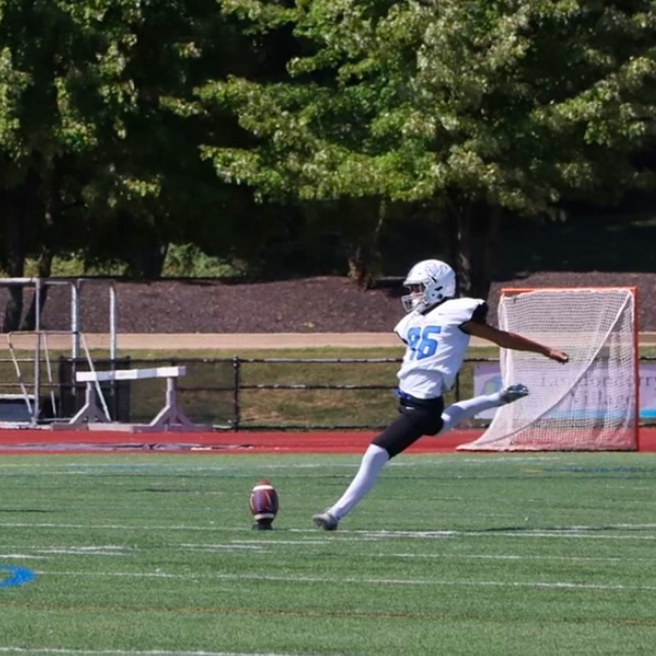What is supraventricular tachycardia?
Supraventricular tachycardia (SVT) is an arrhythmia (abnormal heartbeat) or rapid heartbeat.
A normal heartbeat is caused by an electrical impulse traveling through the heart. The electrical impulse originates in the sinus node (also called the sinoatrial node, or SA node), most often located in the top of the right atrium. The electrical signals travel through the heart tissue to the bottom chambers of the heart, called the ventricles. The electrical impulse causes the top chambers (atria) and bottom chambers (ventricles) of the heart to beat regularly and sequentially.
In SVT, a series of early beats starting in the atria speeds up the heart rate. The rapid heartbeat (arrhythmia) does not allow the ventricles to fill with enough blood, because an electrical signal causes the heart to pump too fast.
Causes of supraventricular tachycardia in children
Supraventricular tachycardia is by far the most common heart arrhythmia seen in infants and children. There are many types of SVT, but the most common form in children occurs when there is an extra electrical connection between the top and bottom chambers of the heart, called an accessory electrical pathway or bypass tract. The Cardiac Center team at CHOP will discuss the details of your child’s SVT, the treatment options and any follow-up care your child will need. Sometimes, SVT can be triggered by activity or other stimulants such as caffeine or decongestants.
Signs and symptoms of supraventricular tachycardia
Symptoms of supraventricular tachycardia in children may include:
- Heart palpitations — an uncomfortable sensation caused by the heart beating hard and fast
- Rapid heartbeats that occur suddenly and randomly
- Chest pain
- Dizziness
- Syncope (fainting or collapsing), which rarely happens with SVT
- Symptoms of heart failure (fatigue, shortness of breath, poor feeding) may develop if an episode lasts more than 24 hours before the patient receives medical care. This is especially true in newborns and infants who cannot communicate the sensation of palpitations or rapid heart rates. Symptoms of SVT in babies are subtle and often involve poor feeding, vomiting, or a general decrease in the baby’s activity level and alertness.
Supraventricular tachycardia almost never causes sudden death. Patients with SVT usually do not have any symptoms when they are not having these attacks.
Testing and diagnosis of supraventricular tachycardia
Supraventricular tachycardia is suspected when a doctor or nurse counts a very rapid heart rate (usually>200 in infants and >160 bpm in older children and teenagers) during an attack. To confirm the diagnosis, your child’s pediatrician might perform an electrocardiogram (ECG – also known as EKG). An ECG is a test which records the electrical activity of the heart. An echocardiogram or “echo” may also be performed in the cardiologist’s office. This is a type of ultrasound that captures moving pictures of the heart.
An ECG, echocardiogram and a physical exam are usually normal if they are performed after the tachycardia (fast heartbeat) stops, so it is important to obtain an ECG while your child is having the symptoms. If that’s not possible, your child may be sent home with a Holter monitor or another heart monitor that can be used to continuously record your child’s heart rhythm over a minimum of 24 hours. An accurate ECG will allow for the correct diagnosis and appropriate treatment for your child.
Your doctor may also refer your child to an electrophysiologist, a cardiologist who has additional education and training in the diagnosis and treatment of abnormal heart rhythms.
Treatment for supraventricular tachycardia in children
Supraventricular tachycardia episodes usually stop on their own. Many babies with SVT will outgrow the arrhythmia by their first birthday. For children with SVT symptoms, treatment may include:
Vagal maneuvers
Older children can learn to do vagal maneuvers to try to slow or stop an episode of fast heart rate. Vagal maneuvers may include:
- Holding breath and bearing down (Valsalva maneuver)
- Immersing face in ice-cold water (diving reflex) or placing a bag of cold water or frozen vegetables on the face for 15-30 seconds)
- Coughing
- Blowing into a straw or syringe
- Doing a headstand
The Cardiac team at CHOP will give you more information about vagal maneuvers and let you know which technique or techniques work best, based on your child’s age and medical condition.
Medication
When tachycardia does not stop on its own or with vagal maneuvers, we may recommend a daily medication to prevent SVT from occurring. We may also treat SVT with an IV medicine, which immediately stops a fast heart rate.
Ablation
While babies with supraventricular tachycardia commonly outgrow the arrhythmia, older children usually do not. Depending on your child's age and the severity and frequency of symptoms, the cardiologist may recommend a catheter ablation procedure to permanently eliminate SVT. During ablation, several IVs (small plastic tubes) are placed in the main blood vessels in the legs. Then, catheters (thin tubes) are advanced up through the veins and into the heart. Electrical signals from the catheters help locate the extra electrical connection, which can then be destroyed and eliminated by heating or freezing. The procedure takes several hours, and most children can go home on the same day. After successful treatment with ablation, your child should not experience any SVT episodes.
Outlook for supraventricular tachycardia
Please speak with your child’s cardiologist about your child’s particular condition and long-term outcome. In general, most children with SVT lead completely normal lives and have normal life expectancy.
Follow-up care for supraventricular tachycardia
If your child has SVT, she may have to see a cardiologist frequently. Children with SVT should see a cardiologist once or twice every year for management of their medications and follow-up electrocardiograms. However, older children who have had successful ablation procedures for SVT may not need ongoing follow-up care.

Why Choose Us
The EP and Heart Rhythm Program has extensive understanding of pediatric arrhythmias and how best to diagnose and treat them.
Resources to help
Reviewed by Victoria L. Vetter, MD, FAAP, FACC
Reviewed on 10/23/2024

